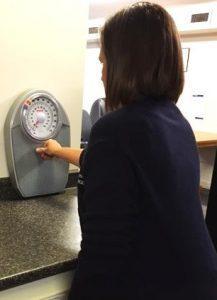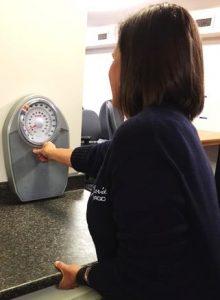We’ve all sat through training where we were instructed how to do something, only to get back to our job to discover that what seemed simple enough in the classroom really didn’t make sense in the field. Or, like me, you’ve probably watched your kids do things on their phones that you thought you would be able to do yourself. (How many times have I asked, “Which two buttons do I push to take a picture of my screen?”) Even principles that are fairly ingrained might not be easy to apply in a new setting. I know, in my brain, that bending my knees gives me better lifting strength, but that knowledge doesn’t make it feel natural when I’m faced with something heavy that I’ve never lifted before. To translate knowledge into skill, I need practice. So how, as ergonomists, can we ensure that the training that we provide is practical for people in the work world?
At Taylor’d Ergo, our training follows the adage, “What I see I forget, what I hear I remember, but what I do, I understand.” Forget about power point slides and videos, and get people trying things out with their hands. Once you’ve identified techniques that have biomechanical advantages, training needs to let people experience these tips and tricks.
Need an example? Perhaps you want to train people to brace themselves while p ushing a load with one hand. This might be a good tip for someone who has to push a handle or tool forward with one hand. There is new evidence to suggest that the ability to brace yourself with one hand can help you generate more force with the hand that is actively pushing or pulling. That’s a difficult concept to explain, but it’s not hard to prove. Try this, using a bathroom scale:
ushing a load with one hand. This might be a good tip for someone who has to push a handle or tool forward with one hand. There is new evidence to suggest that the ability to brace yourself with one hand can help you generate more force with the hand that is actively pushing or pulling. That’s a difficult concept to explain, but it’s not hard to prove. Try this, using a bathroom scale:
- Lean a bathroom scale against the wall at the back of a counter.
- Push against the scale with one hand, as hard as you can, and record the highest value that you can maintain for 3-5 seconds. (I was able to push with 15 lbs of force against the scale.)
- Now use your other hand to brace yourself. You’ll naturally want to pull on the edge of the counter with your “free” hand, while you push with the other. How much force can you generate against the scale? Record that num
 ber. (My reading was 35 lbs.)
ber. (My reading was 35 lbs.)
The reading on the scale will be higher when participants have the advantage of bracing. Participants are proving that they can exert more force with the same amount of effort, using the best practice. Put another way, the best practice makes the task feel (measurably) easier.
I simply pushed with my hand, but I could have used the actual tool against the scale for a more “realistic” effort.
To further strengthen the message, measure how much effort the job requires, so participants can see how the job demands compare with their strength. When they use the “best practice”, the job feels easier, because it requires a smaller portion of their strength. A job that feels easier is less likely to cause an injury.
Safety note: We don’t use “maximum” efforts in best practices training, because we might hurt someone. (MSDs occurring during ergo training are bad for an ergonomist’s reputation! Maximum efforts should not be performed frequently, even just for an hour’s training.) A safer way to demonstrate the difference in strength would be to have people exert what they consider to be a “7” on a scale of o to ten, and record the reading on the scale. You need to give some good guidance on the anchors for 0 to 10. You could call the reading on the scale their “personal max acceptable” for that task, performed on an occasional basis. Secondly, they would exert the same effort (7/10) while bracing. This process sounds complicated but it goes pretty smoothly after participants get the hang of it. People actually enjoy measuring efforts. If you have a lot of best practices to train, use the same protocol for all of them.
Another way of “proving” best practices during training is for the participants to complete the actual task, with and without the best practice, and to rate their effort level on a 0-10 point scale. Their effort will be lower when the best practice is applied. This is much simpler, although perhaps a bit less “fun” without the force measurements to compare.
Most “best practices” can be applied in a quantitative way during training, to really bring home their value. A technique is “ergonomically” better if it requires less effort (or, said another way, allows the worker more strength), or if it will use less energy (feel easier). If the technique can’t be easily proven, you might want to ask yourself how, exactly, is it “best”?
If you need some help to identify and roll out training on best practices in your facility, please contact us!

